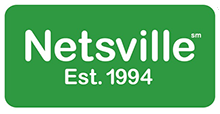Marketing automation has come a long way — from merely being a tool for marketers to automate repetitive tasks to becoming a fortune ball to understand the high demanding customers of today. The technology advancements in this field have empowered marketers to use customer data to unearth valuable insights and create highly personalized marketing communication, sent at the right time and in the right channel. No wonder it’s slated to become a $5.5 billion industry by 2019.
Here are three examples of how deep learning in marketing automation is making marketers’ life easier.
1. Identifying deeper patterns in data for hyper-personalization.
“Personalization” is a widely used term, but it has started to wear down its significance. Don’t get me wrong; I am not suggesting that you should stop personalizing your online shopping experience and marketing messages. What I am proposing is focusing on hyper-personalization.
Marketing automation with machine learning (ML) allows you to personalize customer experience based on their history of interactions, like purchasing habits, behavioral traits and digital preferences. But it does not take the intent of the customer into consideration.
Deep learning technology, on the other hand, will not just rely on the interaction history of the customer but will consider their intent. For example, a customer comes to your site and buys a dress. During their second visit, the same customer starts checking out footwear. In this scenario, the equation will not rely on transactional and interaction data to personalize the experience, but will consider the intent.
Read more at Entrepreneur
Based in Rochester, New York, Netsville is an Internet Property Management company specializing in managing the Digital Marketing, Technical, and Business Solutions for our customers since 1994. For more information, please click here.





